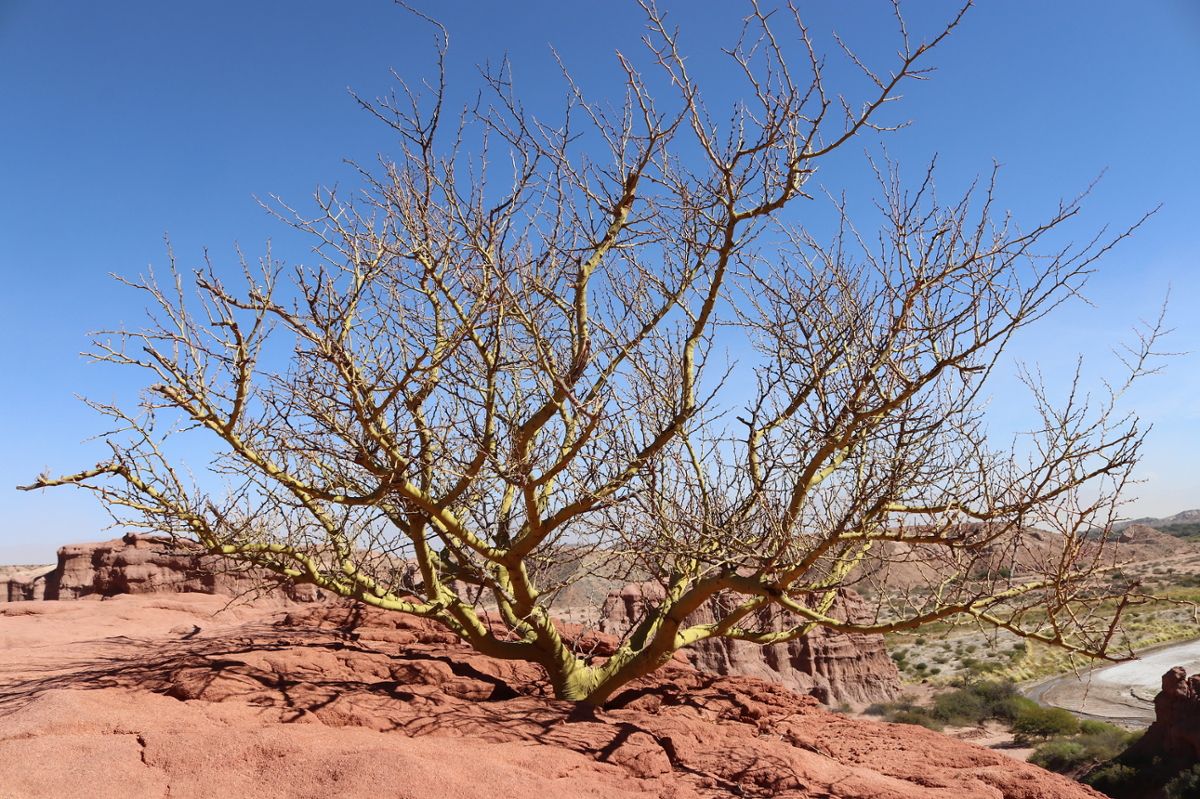Not just any old plant has what it takes to survive desert heat. Desert plants like cacti are remarkable for their unique adaptations to one of the harshest climates on the planet. The palo verde is no exception.
The palo verde is an odd-looking tree that dots the Sonoran Desert landscape of the southwestern United States and northern Mexico. Its branches hang low and are unusually twiggy. Instead of a singular trunk that rises to some height before branching off, the palo verde sprouts about four to six major stems not quite a foot from the ground. Most striking is that from top to bottom, the palo verde is green, hence its Spanish name, which translates to "green wood" in English.
What could the tree possibly gain from being green all over, you ask? The palo verde's bark is equipped with chlorophyll, which enables it to conduct much of the plant's photosynthesis. Why can't the leaves do the job? All plant leaves have tiny holes called stomata through which water evaporates in a process called transpiration. The palo verde is what's known as drought deciduous. During especially dry, hot periods, drought deciduous plants drop their leaves in order to prevent losing water. When the leaves go, the tree's branches take over the job of photosynthesis.
Drought deciduous plants such as the palo verde use this unique survival strategy to sustain long periods of dry heat. In the palo verde's case, it's a good thing because it helps sustain an assortment of other desert organisms. It provides shelter to black-tailed gnatcatchers, Gambel's quail, and white-throated woodrats, as well as to young seedlings needing cover from the intense heat while they germinate.










